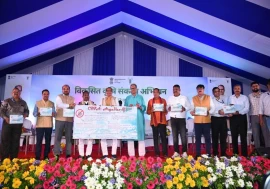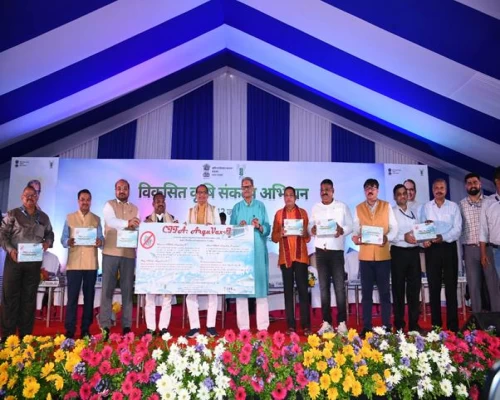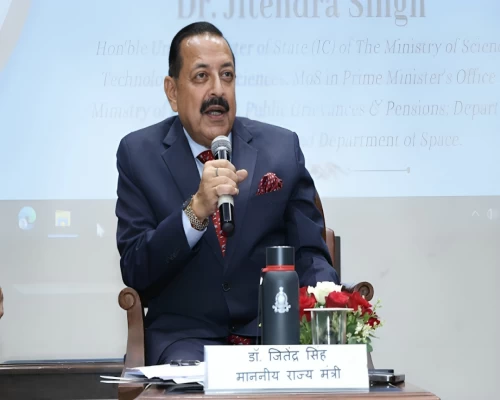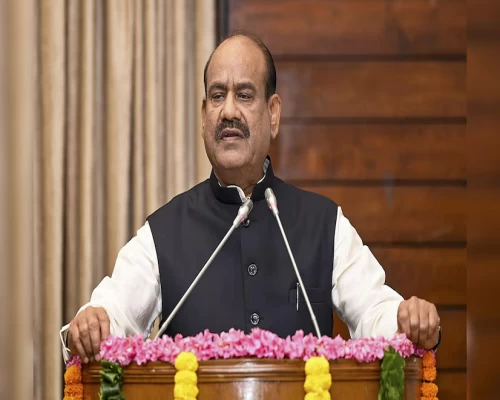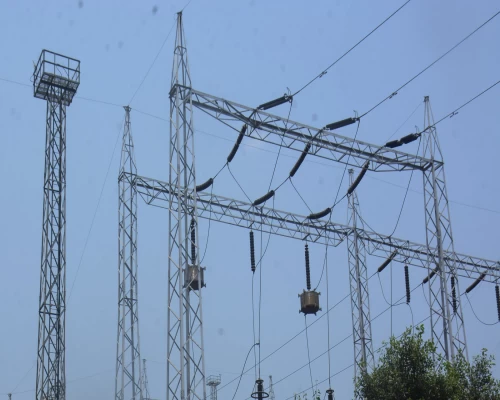_1000_x_500.webp)
New Delhi: The 45-day-long Maha Kumbh Mela 2025, known as the largest congregation of humanity, commenced in Prayagraj, Uttar Pradesh, on the auspicious occasion of Paush Purnima. This grand spiritual gathering began on Monday, drawing an estimated 1.5 crore devotees to the sacred Sangam, the confluence of the Ganga, Yamuna, and the mythical Saraswati rivers, for a holy dip symbolising spiritual purification.
This year’s Maha Kumbh holds particular significance as it takes place after the customary 12-year cycle and coincides with the rare Pushya Nakshatra planetary alignment, a celestial event that last occurred 144 years ago. The initial days of the Mela feature two extended Shahi Snans, on Paush Purnima (13 January) and Makar Sankranti (14 January), expected to attract millions of devotees to the Sangam.
District Magistrate Vijay Kiran Anand confirmed that all preparations are in place, with a robust seven-layer security plan converting the entire area into a fortress. Over the course of the 45-day event, approximately 40 crore devotees are anticipated to attend, participating in six Amrit Snans, each holding significant spiritual importance. Following the first two Snans, the remaining Amrit Snans are scheduled for Mauni Amavasya (29 January), Basant Panchami (3 February), Magh Poornima (12 February), and the concluding day, Mahashivratri (26 February).
A central highlight of the Mela is the grand procession of the 13 Akharas, the Hindu monastic orders, who make a ceremonial entry to the Sangam via the Triveni pontoon bridge during each Amrit Snan. This spectacle adds to the festival’s grandeur.
The seers of the Panchayati Akhara Mahanirvani will lead the first ceremonial dip, followed by the other Akharas, including Panchayati Atal, Niranjani, Anand, Juna, Panchnam Dhashnaam Avahan, Shambhu Panch Agni, the Ani Akharas (Nirmohi, Digambar, and Nirwani), Naya Udaseen, Bada Udaseen, and Panchayati Nirmal Akhara. Only after these monastic orders complete their rituals will common devotees be allowed to take the holy dip.
Authorities expect an average of over two crore devotees on each Amrit Snan day, with the numbers expected to surge to eight to ten crore on Mauni Amavasya, considered the most spiritually significant day of the Mela. On the opening day alone, at least one crore devotees are anticipated, while Makar Sankranti is projected to draw around three crore pilgrims.
The 45-day Maha Kumbh is expected to welcome an unprecedented 40 crore pilgrims and visitors. The vast 4,000-hectare event area has been meticulously organised into 25 sectors, interconnected by 31 pontoon bridges to facilitate the seamless movement of the massive crowds.
BI Bureau


